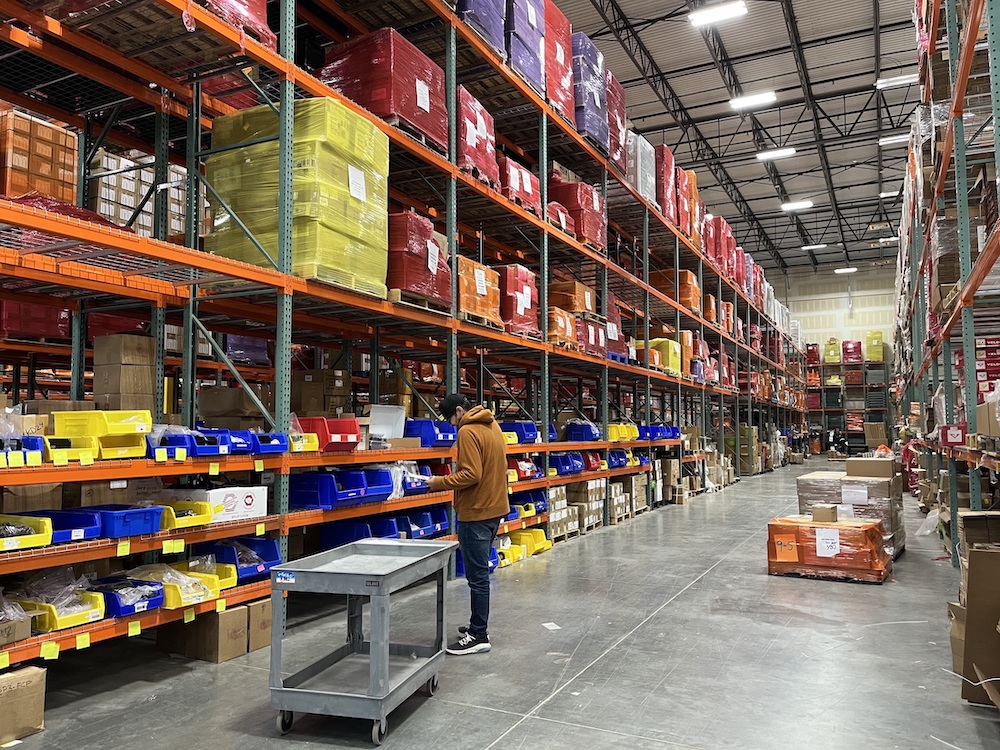Even though it might not always seem like it, things are getting better across global industry supply chains that have been impacted since the pandemic. As shipping ports are easing up, companies are proactively investing in new technologies and building contingency plans in hopes of making their supply chains more resilient and agile.
As we look to 2023, companies need to bridge the gap between data and visibility into their warehouses to give a real-time competitive advantage in resolving problems that cannot be fixed without the right solutions in place. While 93% of supply chain executives claim to be investing in making their supply chains more resilient1, only 21% of supply chains are highly resilient2, thus showing the need for an end-to-end warehouse solution to navigate continued supply chain challenges and disruptive forces. As it’s important to find the right solution partner that understands a specific company’s supply chain, here are seven disruptive trends expected to continue into 2023 that a warehouse solution can help navigate through.

Trend #1: Inflation
Trend #2 Labor Shortage
The acute labor shortage that almost all supply chains are facing will continue well into 2023. A well-defined labor strategy is significant to help organizations maximize existing labor. Now that the labor market is stabilizing, companies need to implement end-to-end warehouse solutions to boost productivity and manage their workforce’s warehouse activities in real-time, while being prepared for whatever disruptions come their way. Whether it’s defining key performance indicators (KPIs) in current operational processes, or specifying work categories and equipment used, labor planning software tools can help manage the company’s workforce better, increasing labor performance and productivity.
Trend #3 The Rise of Third-Party Logistics Providers (3PLs)
As more companies focus on their core operations and outsource fewer essential activities, 3PLs are growing, in which 91% of 3PLs grew in order volume in 2022 and 81% claimed higher profits3. This trend will continue into 2023 as more companies understand the value of 3PLs and focus their limited resources on their strengths. On the flip side, the most profitable 3PLs are those that provide omnichannel fulfillment and those that focused on specific industries. 2023 might be a great time for
supply chains to leverage the expertise of 3PLs and invest in control towers that allow smaller workforces to have real-time access to networkwide data at their fingertips.
Trend #4 Too Much of Everything
What was in short supply in 2021 was excessively ordered in 2022 and might be in oversupply in 2023. Retailers have reported an excess inventory of from shoes to shipping vessels with large deliveries due in 2023 resulting in a mismatch between supply and demand. This is going to cause some short-term pain for retailers as they try to get rid of their excess inventory while providing some relief to budget-strapped consumers looking to save on deals. The writing on the wall (or clipboard in our case) is that companies can’t accurately plan for the future and should thus be ready for whatever comes their way. It is important to have real-time access to all your available data to be able to handle anything that comes your supply chain’s way.
Trend #5 Automation
When looking at the use of automated systems or robotics that a company’s warehouse may be monitoring for 2023, it’s important to understand thar robotics and the workforce cannot replace one another and must work in tandem to maximize full supply chain visibility. While most robotics strategies are still two to three years away from implementation, it’s time for companies to consider end-to-end warehouse solutions and how it will change overall functionality of the supply chain post-implementation.
Additionally, robotics create more data points than an individual ever could, so by putting together a data strategy before implementation, the impact of such a large investment can be further looked at in ensuring the most impactful capabilities.
Trend #6 The Growing Importance of Data Security
As more supply chains turn digital, confidential data becomes more vulnerable to outside attacks, as 58% of cyber security attacks on supply chains were targeted at suppliers that have weaker infrastructure to gain access to the entire company’s network4
Data security has become a top concern for not just supply chain teams, but almost every other industry in 2022 and this trend is expected to continue in 2023 and beyond. Organizations need to vet all external third parties and ensure that they are Systems and Organization Controls 2 (SOC 2) compliant at the very least.
Trend #7 Sustainability
Supply chains account for more than 90% of the environmental impact at consumer goods companies and the increasing attention on environmental efforts has led to nearly half of U.S. consumers saying that they will change their behavior to reduce their environmental impact5. In 2023, more organizations should invest in real-time visibility warehouse solutions as it equips employees with the most up-to-date data to manage disruptions proactively and efficiently.
_2.png)
About the Author: Leigh Chesley is the Chief Customer Officer of Longbow Advantage, the industry-leading supply chain execution company behind The Rebus® Platform and the global leader in warehouse software and consulting. For more information, visit [url=http://www.longbowadvantage.com]http://www.longbowadvantage.com[/url].

